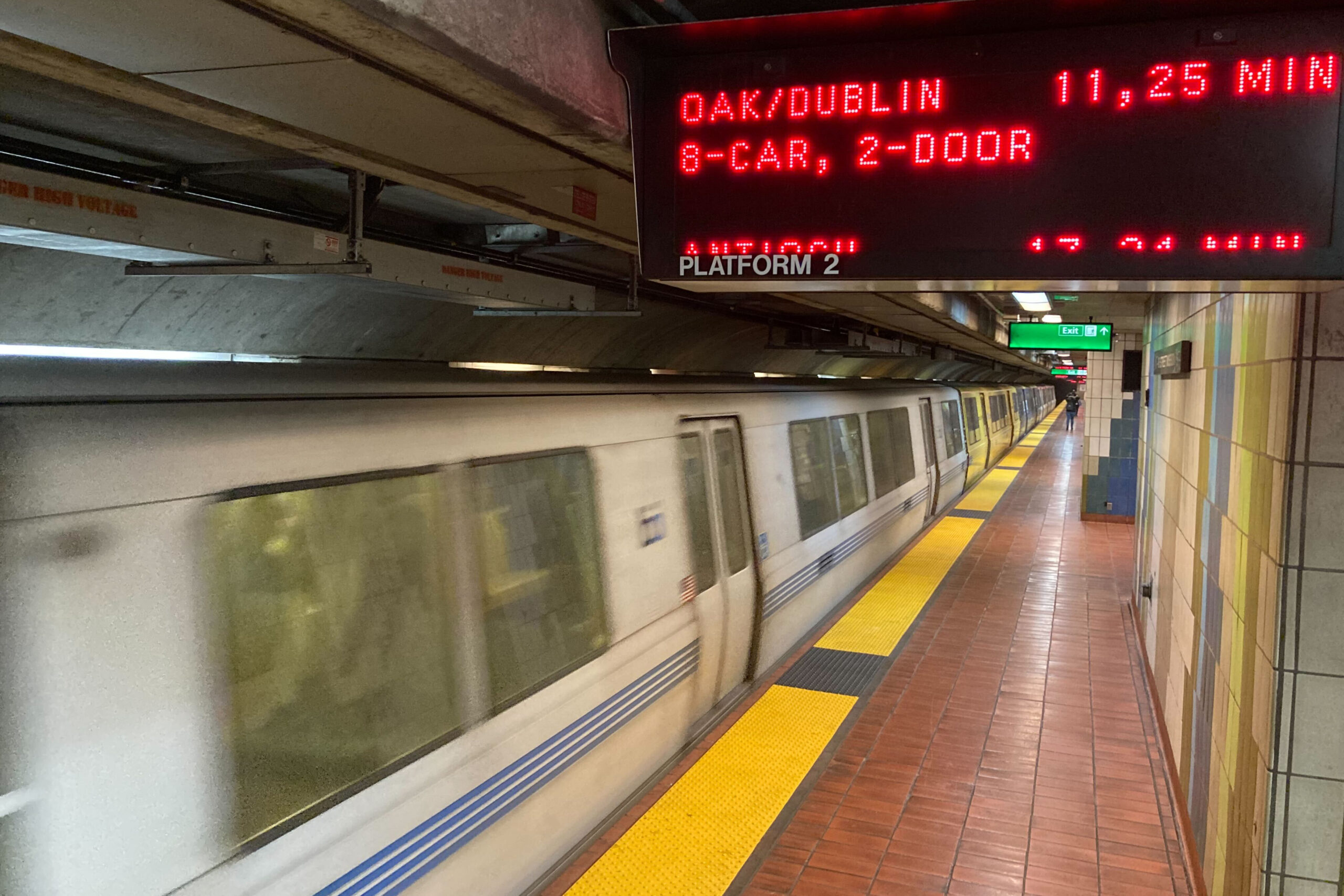To increase ridership, BART is taking a new strategy: More trains on weekends and nights and scaled back service during weekdays.
Under the new system—scheduled to start on Sept. 11—the idea is that no BART rider will wait more than 20 minutes for a scheduled train during the system’s operating hours. Instead of four trains per hour during the day and two trains per hour during the evening and weekend, the schedule will shift to three trains per hour seven days a week.
“The feedback from riders has been consistent: There’s just not enough service on nights and weekends,” said John McCormick, BART’s director of operations planning, at the BART board meeting Thursday. The board unanimously agreed to support the new schedule.
BART’s ridership is still less than half of what it was before the pandemic. According to BART data from December, Saturday and Sunday trains have recovered more than weekday trips, in part a function of the lower overall number of riders on the weekends.
But BART is banking that by boosting service in what used to be off hours, the agency can drive ridership and align service with the changed travel patterns of residents.
The lifeblood of BART used to be ferrying workers to their offices, but Bay Area companies’ “new normal” means workers are averaging two or three days per week in office, McCormick said.
The Yellow Line train that runs between SFO and Antioch is BART’s busiest, with nearly double the passenger load of the second-place Red Line. While there is a baseline of three trains per hour on all lines, the Yellow Line will double that for 6 trains per hour on weekdays, meaning trains every 10 minutes.
Blue Line trains between Dublin and Daly City will now have a 20-minute frequency at all hours, trading fewer trains on the weekdays to more available service on nights and weekends. Blue and Orange lines serve the fewest riders in the system on weekdays.
Another change is to increase service to and from SFO and Oakland International Airport. Red Line trains will now stop at SFO on their way to Millbrae. During the daytime, nine trains per hour will serve SFO, up from eight. Night and weekend trains to and from SFO will go from two per hour to three.
BART officials said the new schedule will also help with efficiency and reliability by giving train controllers more flexibility to move delays around. For train operators, the revised schedule will provide more reliable break and lunch times and provide more service to Contra Costa County where many employees live, according to BART officials.
“I have never gotten such positive and robust engagement from any BART policy or service change I’ve ever posted about,” said BART Board Director Rebecca Saltzman.
Importantly, as the system faces a fiscal cliff, the new schedule is cost neutral and will be able to be accomplished with current staffing levels.
The agency is slated to run out of federal relief funding by March 2025 before transitioning to years of annual deficits over $300 million. Without additional funding, BART could be forced to take drastic action like eliminating weekend service or only run trains every hour.
BART Board Director Bevan Dufty spoke at a press conference Wednesday organized by state Sen. Scott Wiener to speak on the perilous fiscal situation that is facing transit agencies across the state, including BART.
The group of transit agencies was there to lobby for a $5 billion funding package over the next five years to help stabilize their organizations amid huge ridership drops. The funding would come by redirecting revenue from sales tax on diesel fuel, appropriation of unallocated cap and trade revenue, and flexibility to use transit capital funding to run operations.
“Before the pandemic, fares provided more than 70% of the funding for BART service, more than any transit agency in the world, but what was once a source of pride has become our Achilles’ heel,” Dufty said on Tuesday.
